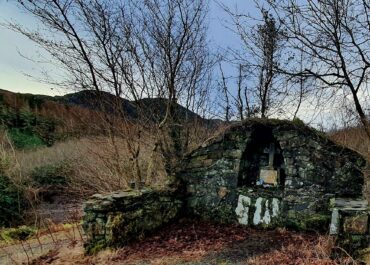Children's burial ground, An Cheathrú Riabhach, Co. Donegal
In the undulating grazing lands of An Cheathrú Riabhach in County Donegal, a modest rise holds a poignant reminder of Ireland's past.
Children's burial ground, An Cheathrú Riabhach, Co. Donegal
This children’s burial ground, also known as a cillín, forms a subcircular platform roughly 18 metres across and standing less than a metre high. Several stones dot its surface, serving as grave markers for the unbaptised infants who were laid to rest here, including a striking block of white quartz measuring just over a metre in length.
These burial grounds represent a particularly sorrowful chapter in Irish history. Unable to be interred in consecrated ground according to Catholic doctrine, stillborn babies and those who died before baptism were often buried in liminal spaces; unconsecrated plots on the edges of communities, frequently near old ringforts, abandoned churches, or boundary areas. The presence of white quartz, a stone often associated with burial traditions in Ireland, adds another layer of meaning to this quiet memorial space.
Today, the site stands as both an archaeological feature and a place of remembrance. While it may appear unremarkable to the casual observer, appearing as little more than a raised area with scattered stones, it carries centuries of grief and love from families who ensured their children received some form of burial rite, even if outside the formal boundaries of the church. The burial ground was formally documented in the Archaeological Survey of County Donegal in 1983, preserving its significance for future generations.


